What is transport?
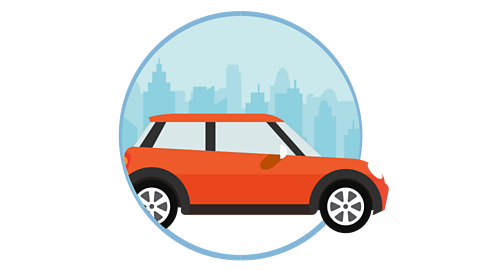
Transportation is the movement of people and things from one place to another.

Watch: Learn about transport in the UK
Discover how towns and cities are affected by the transport we use.
Glasgow is a big, busy city. Cars, buses, trains, planes. People go about their business using all kinds of transport!
Hi, I'm Jude. I've taken a train from Edinburgh to Glasgow to learn all about transport.
Once upon a time, humans could only go as fast as a horse could take them. But thanks to incredible development in technology, transport has totally changed.
Towns and cities have to be built and redeveloped in clever ways to help cope with them all. Let's investigate!
A big chunk of Glasgow is designed in a rare way for the UK. Spreading westwards from George Square, which is where I am stood, the city is built on a grid system. What that means is that the roads are all straight lines that meet at regular points.
Much of the UK was built before there was a lot of transport options like when people travelled on foot or by horse. So many towns and cities have bendy road systems.
But the west part of Glasgow was developed around 200 years ago - which isn't that long when you remember that the UK has had cities for thousands of years.
Planners thought it would be easier for people to find their way around on a grid system with straighter roads.
Glasgow's population was growing quickly in the 1800s, so more roads were needed for everyone to get to where they were going. Trains were soon invented, and not long after that cars.
But at George square, they're planning to reduce the amount of cars and pedestrianise the area. That means they want it to only be accessible for pedestrians, which is what you call people on foot.
The only other vehicles allowed are public transport… no one can bring their own vehicle.
It is one of many green initiatives to help reduce pollution, which is mainly caused by petrol powered vehicles.
Glasgow and other cities like London, have initiatives where people pay higher fees if they have petrol powered cars.
In contrast to Glasgow, London hasn't been designed on a grid system, because it is much older.
It is also much bigger, but most of its transport options are public or powered by electricity, which is to help reduce petrol powered vehicles that cause pollution.
Glasgow has a subway, but London's underground train system has hundreds more stations. It transports millions of people every day.
London has a lot of cycle lanes to encourage people to ride bikes instead of using vehicles.
People can also rent scooters that run on electricity and re-charge other vehicles like electric cars at electric charging stations.
It is one of the few places in the UK to have a tram system. Trams also run on electricity.
Where do you live? And what types of transport do you use to get around on? Which reminds me, I'm late for my train back to Edinburgh!
Different types of transport
Being able to carry goods and reach different places has been essential to people for thousands of years, with walking being used as the main mode of transport.
Later, horses carried people, first on horseback, then in carriages. This is when the road network began to grow. The UK has a system of canalsCanals are waterways built by people, used for transport or watering of crops., which were built to carry goods across Britain, during the Industrial Revolution.
Once the steam engineEngines which would use steam to power cars, ships and trains. was invented, railways and steam-powered ships became common. With better ships, longer distances were reached, and the world became more and more connected. Railway lines were built, connecting different places to each other.
Bicycles, then cars made it possible for more people to travel further and more quickly, which also led to better roads being built.
Finally, the aeroplane became the fastest mode of transport and, as routes are constantly being developed and improved, the world is becoming more and more connected.
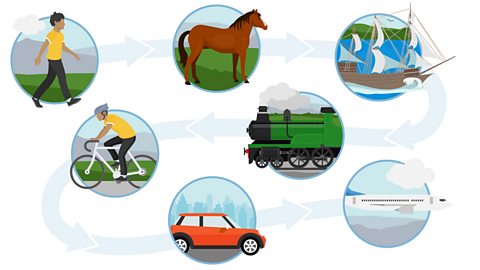
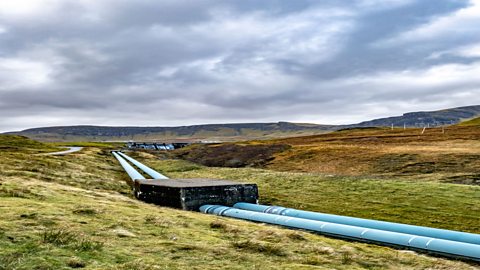
Today, the world's - and the UK's - economy depends on transportation:
- Raw materials are moved to factories. From there, the finished products are moved to shops. Liquid goods, such as oil and gas, can be transported through pipelines.
- People need to travel from home to work, to schools, shops and the doctors.
- Goods need to be transported into the country - these are called imports.
- Goods also need to be transported out of the country - these are called exports.

Activity
Tap and find: Types of transport
Advantages and disadvantages of different transport
All means of transport that people use have their advantages and disadvantages.
Type
Advantages
Disadvantages
Cars

- Comfortable so you can travel from your home to a desired location.
- Access to remote rural areas
- Flexibility - there are no timetables to follow and stops along the route can be added.
- Can save money if people car-share
- Air pollution
- Can be expensive with insurance, tolls and parking charges
- Traffic jams can lead to delays
- Longer journeys can be tiring
Trains
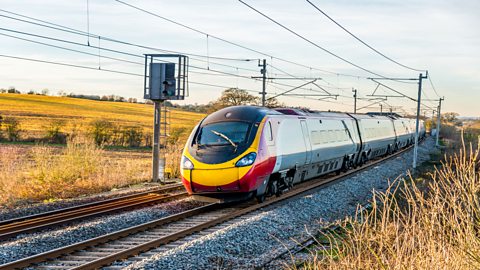
- Fast
- Comfortable for longer journeys
- Avoiding traffic jams
- Set schedule
- Only along fixed routes
- There can be delays or cancellations of trains
Aeroplanes
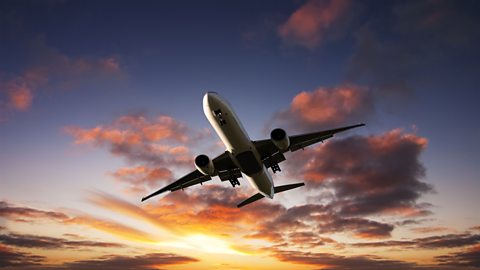
- Fast
- Suitable for long distances
- Reliable
- Safe
- Air pollution
- Expensive
- Only suitable for longer distances
- Set schedule
On foot

- Good for health
- Free
- No set schedules
- No traffic jams
- Good for the environment
- Only for short distances
- Weather can make it uncomfortable
- Requires suitable clothing
Bicycles
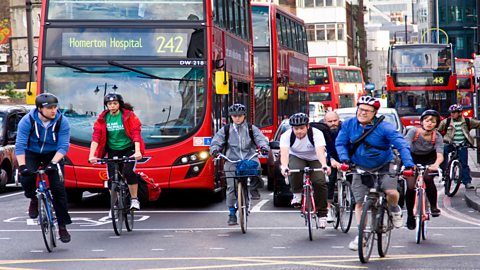
- Cheap
- Good for health
- No set schedules
- Door to door travel
- Only for shorter distances
- Weather can make it uncomfortable
- Can be unsafe cycling on a busy road
- Requires suitable clothing
Ferries

- Comfortable
- You can bring your car on some ferries
- Suitable for reaching remote islands without airports
- Set schedules
- Routes are limited to harbours
- Can take longer than in an aeroplane
Changes to transport
Once, canals were the main way of transporting goods inland in the UK, but railways took over. In the UK, roads and railways link the main cities. Large cities have airports, which allow fast air travel to different countries and continents. Coastal towns still serve as important ports and harbours.
During their time in Britain, the Romans built a network of roads connecting the main cities, which allowed them to move soldiers and supplies very quickly. Some of the modern roads in use have been built along the same route the Romans used.
Today, roads are getting repaired, being straightened to shorten the length of the journey and new motorways are being built.
Modern travel in the UK
The UK is covered with a road network, which connects remote locations with areas that have a large populationThe number of people living in an area..
The largest cities are connected by motorways. Smaller roads link towns and cities. Rural areas have plenty of country roads, linking settlements. Buildings in settlements are connected by streets, avenues or lanes.
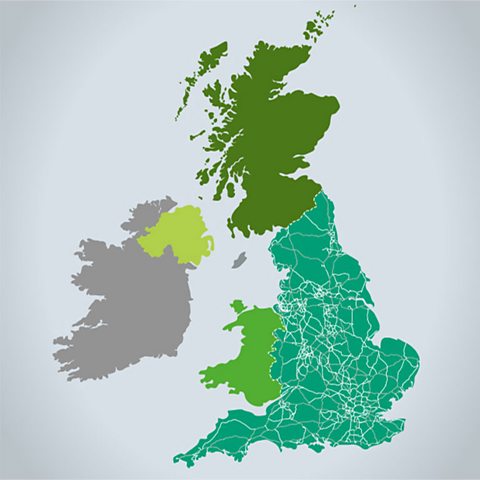
Congestion
Large cities can face congestionWhen roads are filled with too many cars and vehicles, the roads become congested and the traffic slows down or stops completely. problems - there might not be enough roads for all the commutersPeople travelling regularly between their home and a town or city usually for work. or the roads might not be wide enough.
Cities along bus routes can face congestions.
There are several ways of improving congestion:
- building a ring road - a route around the city for people who don't need to stop there.
- Car parks on the outskirtsParts of cities that are the furthest away from the city centre. of cities, which are connected to the city centre by public transport such as tramways, buses and trains.
- Car-sharing by commuters.
- Discouraging people from driving into city centres by introducing congestion charges or parking only for people who live there.
Activities
Order it: Journey from Glasgow to Manchester
Quiz: Transport
What is climate change?
GREEN CLASSROOM

Bitesize Primary games. gameBitesize Primary games
Play fun and educational primary games in science, maths, English, history, geography, art, computing and modern languages.

More on Geography of the UK
Find out more by working through a topic
- count13 of 17
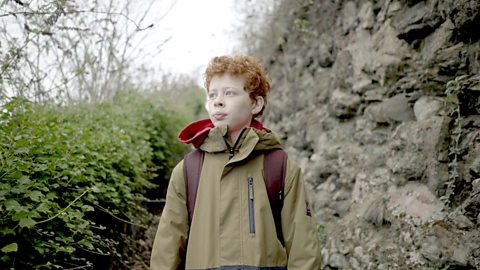
- count14 of 17

- count15 of 17
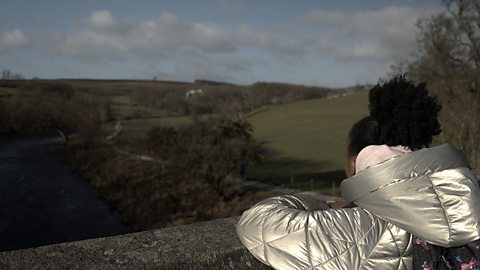
- count16 of 17
